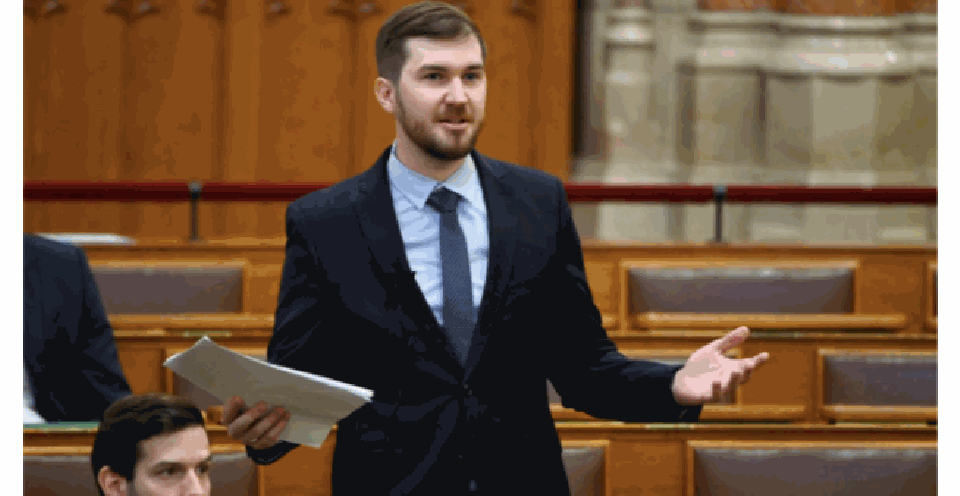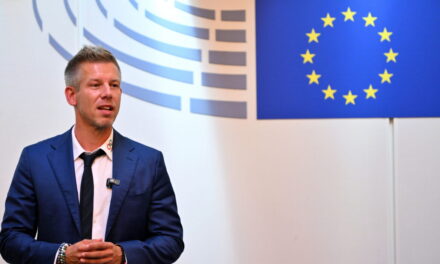It's not just opinion polls that indicate that the opposition is in a hole. In addition to the lack of characters and themes, they also copy each other, especially when it comes to Momentum, Jobbik and the Nép Pártján Mozgalum, aimed at right-wing voters. Let's see how!
The opposition parties are in a hole, and this is not only indicated by the latest opinion polls probing party preferences.
According to experts
a lack of characters and themes can also be discovered at these parties
following the parliamentary elections in April.
While the governing parties take a firm position on current political and social issues, the current opposition is clearly searching for a way forward.
This does not exclude the possibility of background negotiations and political transfers. (Following the former , it is worth mentioning the stalled negotiations taking place in the capital : the DK and Momentum would divide Budapest between themselves, as far as the 2024 local authority votes are concerned. In connection with the latter, it is worth mentioning: it can be seen that the Gyurcsány party primarily It started to be built in Budapest; politicians and activists are coming to DK. Similarly with Momentum or Péter Jakab's movement.)
However, it can be noticed that the political arena before the elections is being rearranged in the case of several opposition groups.
They grope to the right
With Ferenc Gelencsér, he became the president of Momentum who does not only want to conform to the left-liberal opinion climate. He gets it (within the party), he got his.
For example, the about the purple party giving way to a former Jobbik representative, János Stummer: "Momentum's coded "third passenger" fascism under the leadership of Gelencsér is proceeding with full force. (…) It is interesting that we have not yet seen the president of the party in a joint picture with the liberal-democratic and social-democratic leaders of Momentum, as if they no longer existed or were not members of the party. Anna Donáth, Dániel Berg, Katalin Cseh and others disappeared".
With the departure of Péter Jakab, the way to consolidation was opened for Jobbik, which certainly means the continuation of the "pro-people direction" started by Gábor Vona.
Party chairman Márton Gyöngyösi would no longer go to the Donetsk and Luhansk People's Republics, which are not recognized by the EU, as an election observer. "You can apostrophize this as a drift, but it's more of a symbiosis with the community. Some people react to a marriage crisis with a divorce, I prefer to try to understand the problem and solve it together with the community. These are the big trips for me, if I ever have to write about something, they will be them. I managed to surpass Jobbik at the time, and partly also myself at the time," he declared, and then called the parliamentary speech of the Jew-lister an "unfortunate, thoughtless" sentence .
The former Jobbik chairman Jakab does not consider this process to be consolidation, on the contrary: he called Jobbik a sycophantic party of the larger government force. Then, at the unveiling of the flag of the People's Party Movement, he explained: "I have to say this on the celebration of the founding of the state, that this country needs nothing less than a new Saint István. For a leader who is able to build a unified nation out of the tribes that are fighting each other and are constantly distorting each other, to build a state that protects, not deprives".
That is
Gelencsér, Gyöngyösi and Jakab also open to the right, (or) return,
targeting the voting base of the governing parties, as evidenced by the political actions detailed below. However, it is not only the lack of characters and themes that can be filtered out of these, but also the fact that each campaign is copied from one another. For example, when the governing parties launched the latest national consultation.
Plus they copy each other
In response to this, Jakab wrote on September 23: "If the Fidesz national consultation comes, fire with it."
On the same day, Momentum: "If Fidesz holds a national consultation, we will show them on the streets what the people really need!" It will be good for Jújtós!"
A few days late, on September 28, Jobbik also ran: "The amount allocated for this could cover the winter heating of 100,000 Hungarian families. This is exactly what we demand: firewood for the Hungarian people instead of lighters!"
Following the 1956 revolution and freedom struggle, as well as Russia's war in Ukraine, the Soviet "heroic monument" in Szabadság tér came into the spotlight. Promotions have arrived, but in a different order.
On October 17, György László Lukács from Jobbik announced in his press conference that this monument is nothing more than a symbol of Soviet oppression, of entering the country unsolicited, so it is a shame that this monument can stand on the square called freedom, thus mocking not only the 1956- ot, but also the World War and the Hungarians' sense of freedom. "As a responsible conservative party, we have submitted a proposal to the Parliament to remove the Soviet monument from Szabadság tér! "
On October 22, a few days later, Momentum activists drew attention to themselves by wrapping Hungarian ribbon around the "monument" . “Momentum never demanded the monument be demolished. Dressing the marble column in national colors was not aimed at this either. However, we absolutely do not agree that the work, which carries a bad message both politically and historically, is still standing in a place of particular importance for Hungarians. In addition, it is decorated with a red star, hammer and sickle - i.e. forbidden symbols of autocracy. That's why we want it to be in a less symbolic place than it is now," Dániel Berg wrote on his social media page .
And again, only Momentum followed Jobbik then,
when the government's bomb posters began to be taped.
The guerilla action of Márton Gyöngyösi on October 25, the movements of Gelencsérek started in the first days of November.
Featured image: Noémi Bruzák













